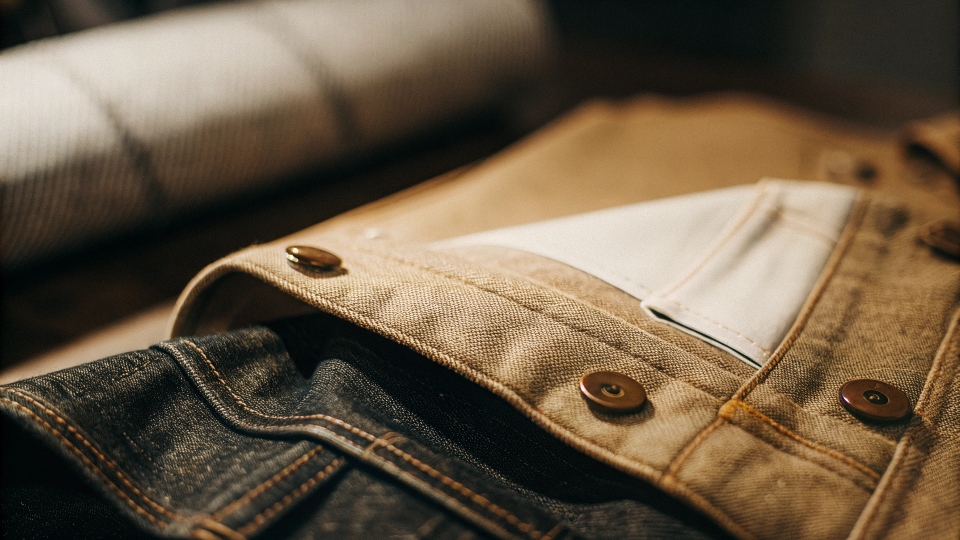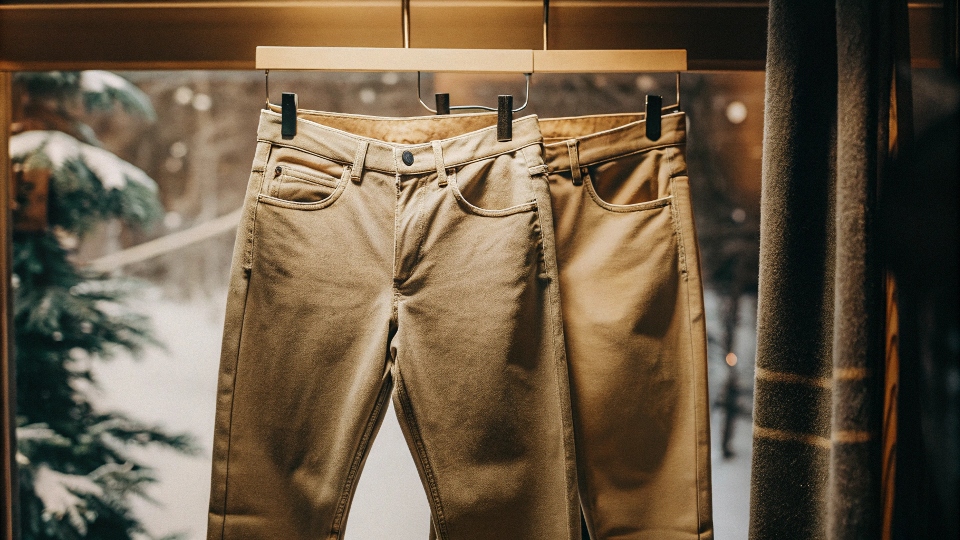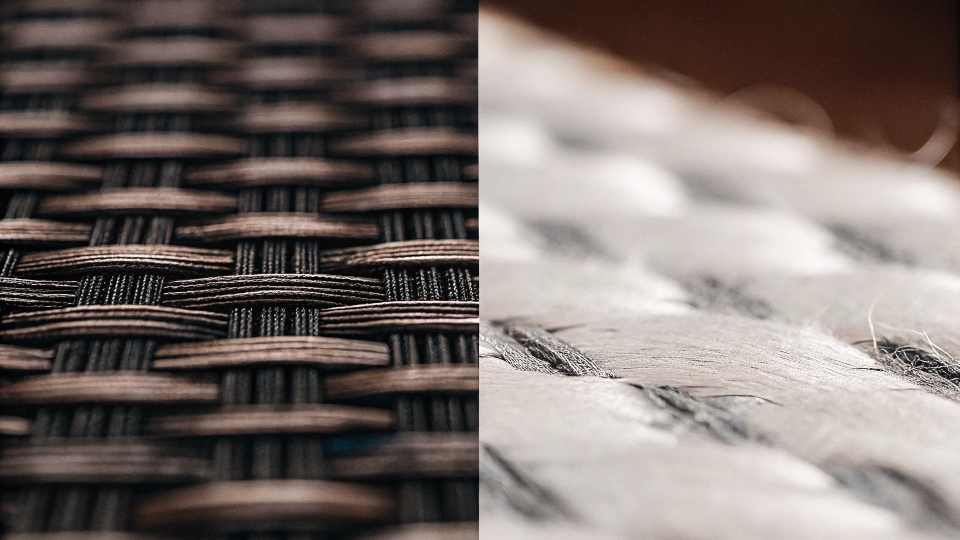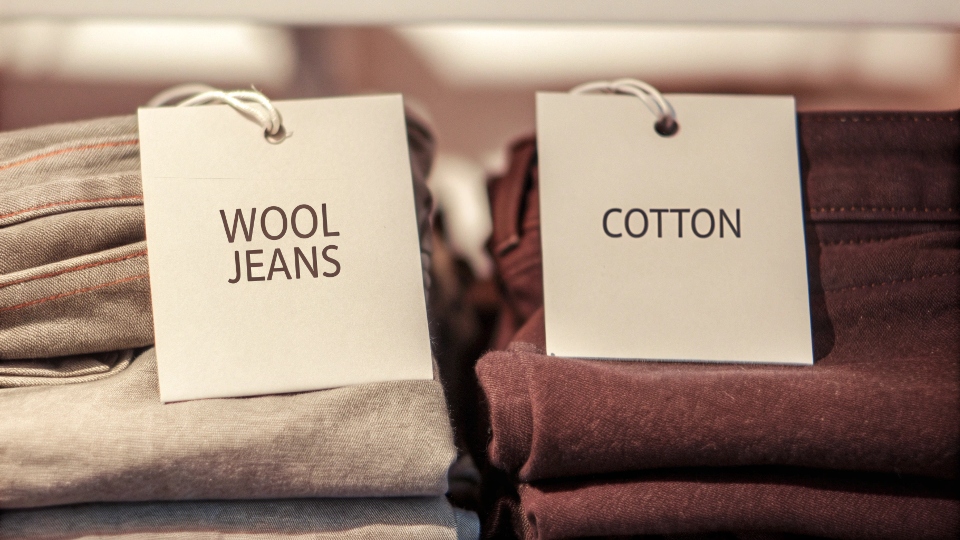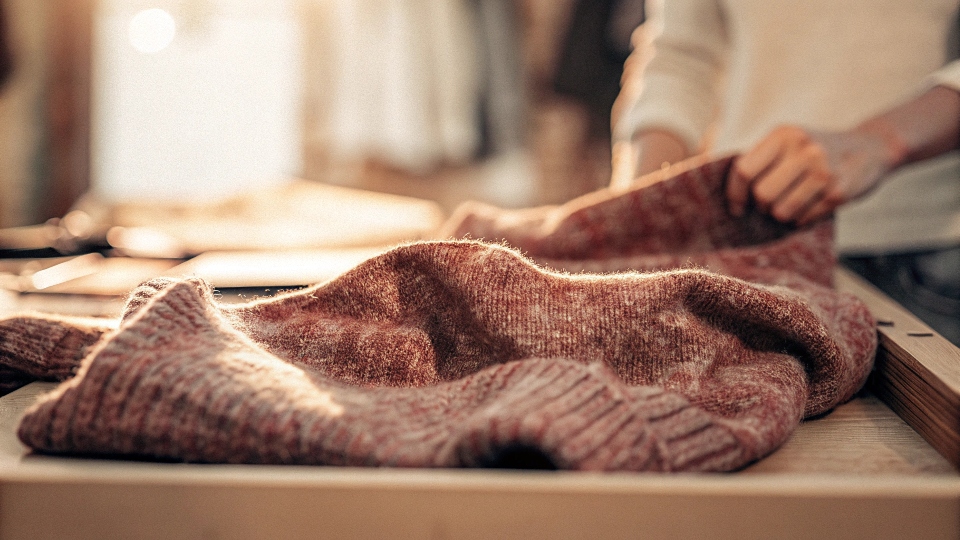Winter is coming, and your classic cotton jeans just don't offer enough warmth. You want the timeless style of denim but the cozy insulation of a wool sweater.
Yes, you can make jeans from wool, creating a fabric known as wool denim. It's typically a blend of wool and cotton1, offering a warm, soft alternative to traditional jeans2, though it remains a niche product.
In my two decades running a denim factory, I've worked with almost every fiber you can imagine.
Designers like Dean are always pushing the boundaries, asking for new materials that can solve a problem or create a new feeling. While cotton is the undisputed king of denim, we get questions about wool every fall.
It's a fascinating material to work with because it forces us to completely rethink our standard production processes, from weaving to washing. Let's explore what it really means to make a pair of wool jeans.
Can Jeans Really Be Made Out of Wool?
You think of jeans as rugged and tough, and wool as soft and delicate. It's hard to imagine how a material known for sweaters could possibly work for a pair of pants.
Absolutely. Jeans can be made from wool, but they are almost always a blend. Pure wool lacks the strength for daily wear, so it's mixed with cotton to create a durable, warm fabric.
The secret is in the blend and the weave. When a client requests wool jeans, we don't just swap cotton for 100% wool.
That would create a pair of pants that would stretch out of shape and pill terribly within a few wears.
Instead, we typically create a blend, often with a cotton warp for structure and a wool weft for warmth and softness. This construction gives you the best of both worlds.
The resulting garment has the look and feel of denim but with a much softer hand-feel and significantly more insulation.
From a manufacturing standpoint, this requires different loom settings and a much gentler washing process to avoid shrinking or felting the wool fibers. It's a premium product, designed for comfort in cold weather, not for rugged work.
| Feature | 100% Cotton Denim | Wool-Blend Denim |
|---|---|---|
| Feel | Crisp, sturdy, breaks in over time | Soft, slightly fuzzy, drapes more |
| Warmth | Moderate, not ideal for deep cold | Excellent, naturally insulating |
| Durability | Very high, resists abrasion | Moderate, prone to pilling |
| Care | Easy (machine wash/dry) | Difficult (dry clean or gentle wash) |
Is Wool Denim a Real Fabric?
You've heard the term "wool denim3" thrown around, but it sounds like a contradiction. You wonder if it's a real textile category or just a clever marketing phrase.
Yes, wool denim3 is a legitimate fabric. The term "denim" refers to a specific twill weave, not the fiber itself. Wool denim is simply a twill-woven fabric that contains wool.
This is a point of confusion I often clarify for designers. Denim is defined by its construction, not its content.
The classic 3x1 twill weave4, which creates the diagonal lines you see on your jeans, is what makes a fabric denim.
While 99% of the world's denim is made from cotton, we can technically make denim from silk, linen, or in this case, wool.
When we produce wool denim, we are using wool yarn and weaving it into that characteristic twill structure.
As I mentioned, the most successful versions use a cotton warp (the vertical threads) to provide the rigid backbone and a wool weft (the horizontal threads) to deliver the softness and warmth.
So, it's not just a marketing gimmick; it's a specific, albeit rare, type of textile engineered for a particular purpose: creating a warm, comfortable jean.
If Wool Denim Exists, Why Don't We See It More Often?
A warm, soft pair of jeans seems like a perfect product for winter. So why aren't the shelves of every store filled with wool jeans every autumn?
Wool denim isn't common for four main reasons: it is expensive to produce, less durable than cotton, requires special care, and is highly seasonal, limiting its commercial appeal.
In my business, every decision comes down to a balance of quality, cost, and marketability. Wool denim faces challenges in all three areas.
First, cost. Good quality wool is significantly more expensive than cotton. This translates directly to a higher retail price, which shrinks the potential customer base.
Second, durability. Wool fibers are not as strong as cotton and are very prone to pilling, especially in high-friction areas like the inner thighs.
This is a major quality concern for a garment meant for everyday wear. Third, and perhaps most importantly, is care. Consumers expect jeans to be easy to care for.
Wool's "Dry Clean Only" or "Hand Wash Cold" label is a major barrier. One mistake in the laundry can ruin an expensive pair of pants. Finally, it's a seasonal item5. Brands prefer to invest in products they can sell year-round, and wool jeans are strictly for cold weather.
What Are the General Downsides of Wool Clothing?
You are considering using wool, not just for jeans, but for other pieces in a collection. You need to understand the potential problems before you commit to the fabric.
The primary disadvantages of wool are its tendency to shrink or felt with heat and agitation, its risk of pilling, the potential for itchiness, and its high cost.
As a factory owner, these are the quality control issues6 we have to manage whenever we work with wool. They are inherent to the fiber itself and are important for any designer to understand. The biggest issue is shrinkage.
The surface of wool fibers is covered in tiny, overlapping scales. When you apply heat, moisture, and agitation (like in a washing machine), these scales interlock and pull the fibers tighter together, a process called felting.
This is irreversible. Pilling is another issue; it's caused by friction rubbing short fibers out of the yarn, which then tangle together. The "itch factor" is also real, though it depends on the quality of the wool. Coarse wools have thick, stiff fibers that can irritate the skin, while superfine merino wool7 is incredibly soft.
Each of these downsides can be managed with proper care and high-quality material selection, but they make wool a more demanding fabric for both the manufacturer and the consumer.
Conclusion
Wool jeans are a real and luxurious option for cold weather8. However, their high cost, delicate nature, and difficult care requirements mean they will likely remain a niche product for discerning customers.
-
Learn how blending wool and cotton creates a durable and warm fabric perfect for winter wear. ↩
-
Discover why wool denim offers a softer feel while maintaining the classic denim look. ↩
-
Explore the unique properties and production methods of wool denim, a cozy alternative to traditional jeans. ↩ ↩
-
Understand the significance of twill weave in creating the unique texture of denim fabrics. ↩
-
Understand the market dynamics that make wool jeans a winter-only product. ↩
-
Understand the challenges faced in wool production and how they affect garment quality. ↩
-
Discover why merino wool is favored for its softness and comfort in clothing. ↩
-
Explore the luxurious feel and warmth of wool denim, making it ideal for winter. ↩

